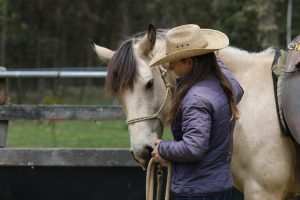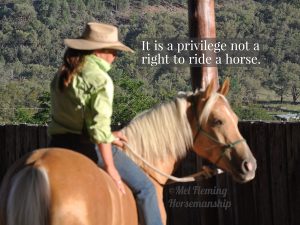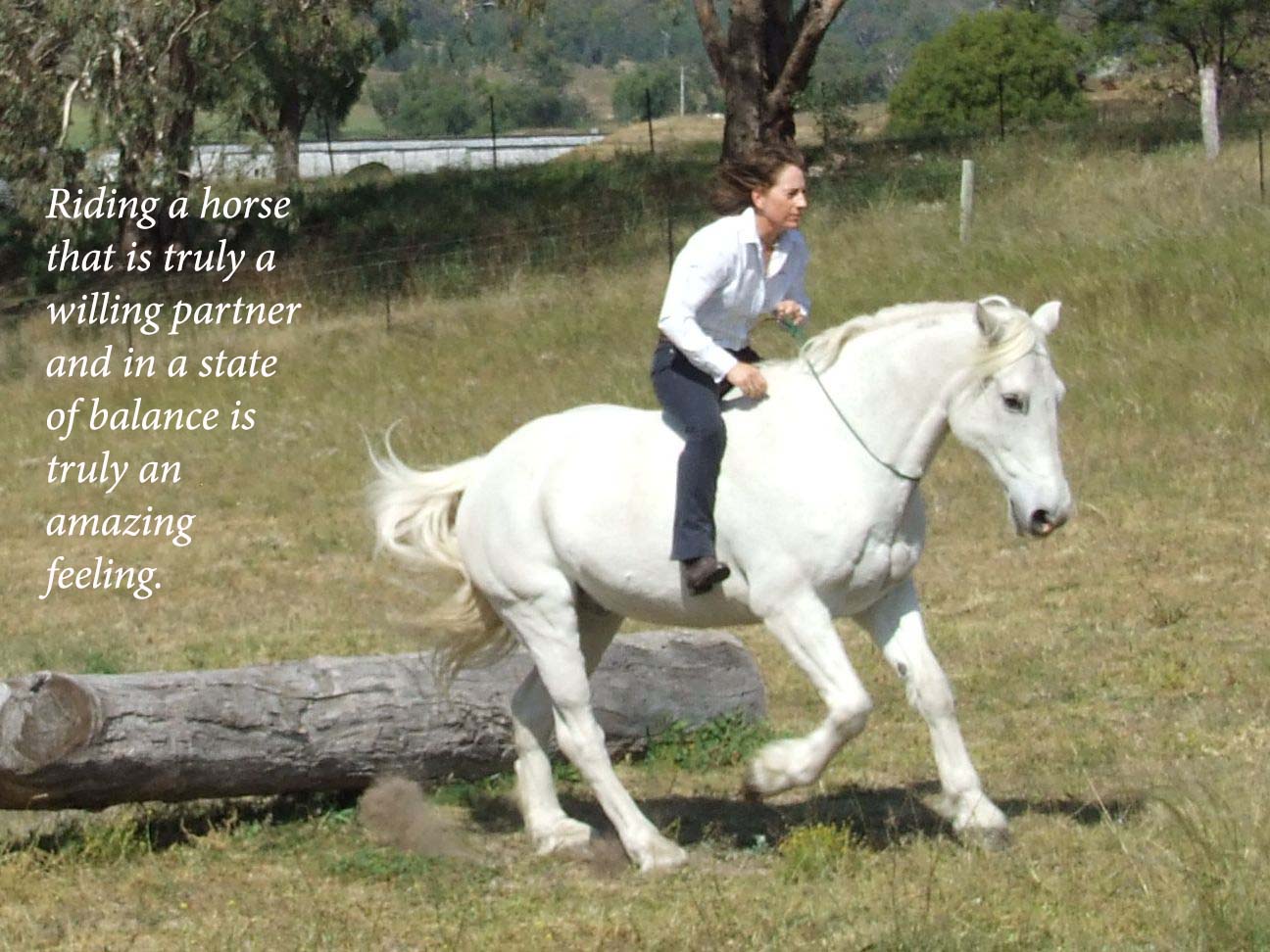Fear is a big and very common issue for many people who ride or who would like to ride horses. Even some very experienced riders are still dealing with fear. I so often hear people say “ I just want to get over my fear with riding”. Becoming a confident rider is not about just gulping down the fear or overcoming the fear and hopping on. It is about understanding what that fear is really about and working with that.
All fear is real – because if someone is feeling fear it is real for them. What we need to decipher is whether that fear is justified in this current moment or situation or not. Let’s delve deeper into it.
Many times people think they are just being silly and are hard on themselves because they feel fear which they think is probably unjustified in their current situation. And, fear could be and often is, 100 % related to a negative experience someone has had in the past and it is actually not justified in the current situation. An expert opinion could be helpful here to determine whether the current situation is safe or really is something to be feared, but you need to be sure that your expert is really an expert and reading the horse correctly. Also sometimes a rider can feel subtle things in a horse that cannot be easily seen. So whilst I have recommended getting an outside opinion always follow your gut instinct over following someone else’s advice. Your gut instinct might say “yeah I think they’re right and to follow their advice” or it might say “no – it doesn’t feel right.” If your fear is unwarranted in a current situation then it is about taking baby steps and using approach and retreat to regain your own confidence.
However, I believe that much of the fear that people feel is very justified in their current situation and not just a memory. Often it is people’s deeper intuitive sensing. They are sensing the fear or defensiveness in the horse (even if it is not blatantly obvious to others) and are being warned that things are not safe – they should take heed and listen to this. Many horses are great at hiding their emotions and how they really feel until you get good at “seeing” the truth and most people are so used to feeling tension (that’s their normal) that they don’t realise that as a sign of potential danger. Sometimes I see people riding and hear them say “ I am not afraid and I have no fear” but my observations would lead me to think “ You probably should be feeling some fear right now, this situation is an accident just waiting to happen, a time bomb ticking and you are so unaware you don’t even know it.“ Of course if it was a clinic/lesson situation l would actually say something not just think it, but often I am witnessing this in situations where my opinion or advice has not been asked for.
Riding horses is dangerous (so is driving a car or crossing the street) – if you go to any riding school, arena, or competition grounds you will see all the signage and have to sign the indemnity forms saying “Horse Riding is a dangerous sport. Ride at your own risk.” There is not point trying to pretend it is 100% safe – you are riding a big, powerful, strong, living, thinking, emotional, feeling being with a mind of their own.
 Here is how I feel safe and confident to ride, start horses under saddle and how I think we can make riding as safe as it could possibly ever be (99.99999% safe).
Here is how I feel safe and confident to ride, start horses under saddle and how I think we can make riding as safe as it could possibly ever be (99.99999% safe).
- Make friends with your horse – your horse needs to truly like you.
- Be a leader that your horse chooses to follow
- Have a clear and comprehensive communication system
- Get your horse calm, confident, thinking and wanting to participate
- Develop your own balance, feel, body awareness and coordination
- Develop your mental and emotional fitness
- Develop your horses mental and emotional fitness
- Develop your horse’s physical balance
- Develop your horse’s confidence in different situations/ areas (don’t push then into situations they can’t cope with yet)
- Have an emergency hand brake and pre-programmed positive responses that you have taught your horse and maintained with practice, to prepare for the adverse situation where you might need an emergency hand brake. The more preparation and the better the results in the previous points, the less likely it will be that you will ever need to use an emergency handbrake.
My teaching delves deeply into all these aspects. I wouldn’t call myself a brave rider or a big risk taker and I am definitely no bronc rider. I just develop the horse’s confidence and build the relationship to a point where it is pretty unlikely that things would go wrong. When you feel safe riding is so much more enjoyable. I like to be sure, that I’m sure, that I’m sure. And I want my horse to be sure, that he’s sure, that he’s sure. (Using some of one of my mentors -Ronnie Willis’s -words here.)
Is your horse open, receptive, soft, relaxed, willing, calm and thinking? These traits equal safety and success.
Or is your horse shut down, switched off, impulsive, reactive, rushing or pulling, pushy, braced, unresponsive, dull or not thinking, even if it’s only in very subtle or minor ways ?These traits are the time bombs ticking and the accidents waiting to happen.
A calm horse is a safe horse. We need to know the difference between calm , shut down, switched off and introverted.
We don’t need to be brave, we need to be aware and to be smart. We need to have a systematic learning program with many stepping stones to develop ourselves and our horses. We need to leave no stones unturned – meaning we need to dig and find any and all, of the hidden and supressed emotions that horses have that prevent them from being open, receptive, soft, relaxed, willing, calm and thinking. We need to develop ourselves to offer a quality of feel, balance and leadership that horses will want to participate with. This is how we can feel confident and be as safe as we can possibly be with horses.

Developing this will take time, commitment and dedication. Sadly you can’t just buy it you have to develop it. Even when you think you have bought the perfect horse (which of course there is no such thing, just like there is no such thing as the perfect human being), we still have to develop ourselves as those horses will diminish to our level. The journey of true horsemanship is a never ending journey of growth in mind, body, emotions and spirit for both the horse and the human – a tough journey at times but one of the most worthwhile and rewarding ones that you could ever undertake. It is easiest done under the guidance of a good mentor – it is a much longer and harder road to do alone.
I can offer you guidance and mentorship through live clinics, lessons and virtually via video coaching and phone consultations. If you want horsemanship to be just as great for the horse as the human, then I would love to be your coach and mentor you on the road to safety, confidence and success with horses.
With Love,
Mel
